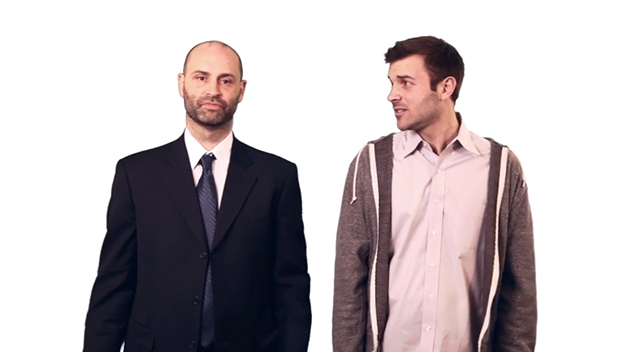 A video visit does not replace an in-person visit, in any universe. (Photo: Prison Policy Initiative)
A video visit does not replace an in-person visit, in any universe. (Photo: Prison Policy Initiative)
As the word “reform” swirls around current conversations about the criminal legal system, many proposed ideas involve new technologies. The techier, the assumption goes, the better! Data-driven “predictive policing” is branded as a route to figuring out where crime is going to happen. (In reality, such tactics involve using previous arrest data to increasingly target neighborhoods of color.) “Risk assessment tools” are sold as key to determining who can safely be paroled – but depending on how they’re used, they may deepen the racist disparities they supposedly counter. Electronic monitoring is advertised as a path toward reducing incarceration, but monitors are actually enlarging the bounds of who is caught inside the carceral system.
All the while, these technological “solutions” are padding the pockets of private companies – at the expense of people of color and the poor.
Video visitation is one such shiny-yet-insidious technology, which has rapidly spread over the past couple of years: More than 500 jails and prisons around the country are now experimenting with it. On the one hand, for people incarcerated far away from their loved ones, video visits could be a welcome channel of communication, allowing them to “meet” face-to-face without requiring long, expensive journeys. The “visits” also offer young children, the elderly and people with disabilities – who might be less able to travel – the opportunity for some face time.
Still, a video visit is no real substitute for an in-person visit, in any universe. However, as a recent report by Prison Policy Initiative documents, the introduction of video visitation often forcibly replaces in-person visits, in order to maximize profits for the private companies that provide the technology. Family and friends, most of whom don’t have much money, are then compelled to pay for the (heftily priced) video calls if they want to see their loved ones’ faces. Add to this the fact that many poor families don’t have access to the equipment necessary to receive a video call – and so, for some, video visitation simply spells the end of visits.
Prison Policy Initiative has produced a series of videos illustrating the deep flaws and dangers that come along with video visitation. These videos are both enlightening and entertaining, and we are happy to debut them here on Truthout.
Watch them below, laugh a little (seriously, they are funny) and decide for yourself: Is video visitation a benefit for families of the incarcerated? Or does it simply deal another blow to marginalized people, while boosting corporate profits?
“Talk to the Forehead”
Video visits often eschew eye-to-eye contact for, well, “eye-to-forehead contact.” Unless you believe that “the eyebrows are the window to the soul,” you might wonder whether bolted-in screens and seating – which limit camera placement and might not even allow your loved one to see your face – make a whole lot of sense. Research shows that especially for young children, eye contact is crucial to making a meaningful connection, and video visits may prove so frustrating that they defeat the point of a call in the first place.
“Options of One”
Is video visitation just like Skype? Nah . . . Most devices (phones, tablets, Macs) aren’t compatible with the video visitation software used in jails and prisons, so unless you’re on a Windows PC, your options are nil. Even if you manage to land the correct computer, depending on bandwidth and specifics, your picture might be out of focus, slow or staticky, and many “visitors” experience pixilated and even frozen images of their loved ones.
“Only $29.95”
In case you had any doubts about video visitation not living up to Skype-like standards, consider this: Although a Skype call is free between two video users, a video visit can cost up to $1.50 per minute. The exorbitant cost of prison phone calls has gotten some much-needed attention lately – and the pricing on video visitation is even more ludicrous (and, for many families, prohibitive). Companies like Securus, JPay, HomeWAV, TurnKey Corrections and Telmate are making bank off of some of the poorest families in the country.
“Family Time?”
Many video visitation contracts ban in-person visits. This is an act of stark cruelty and inhumanity leveled against incarcerated people and their loved ones – but the elimination of face-to-face visits ensures big profits for private companies.
Thankfully, there’s a bit of hope in sight, on this front: Some counties are rejecting the shift toward video visits. (Dallas County, for example, said no to videoconferencing several months ago after a major push by activists.) Still, across the country, contracts for video visitation are barreling forward, endangering the possibility of actual human contact for many thousands of families.
Our most important fundraising appeal of the year
December is the most critical time of year for Truthout, because our nonprofit news is funded almost entirely by individual donations from readers like you. So before you navigate away, we ask that you take just a second to support Truthout with a tax-deductible donation.
This year is a little different. We are up against a far-reaching, wide-scale attack on press freedom coming from the Trump administration. 2025 was a year of frightening censorship, news industry corporate consolidation, and worsening financial conditions for progressive nonprofits across the board.
We can only resist Trump’s agenda by cultivating a strong base of support. The right-wing mediasphere is funded comfortably by billionaire owners and venture capitalist philanthropists. At Truthout, we have you.
We’ve set an ambitious target for our year-end campaign — a goal of $112,000 to keep up our fight against authoritarianism in 2026. Please take a meaningful action in this fight: make a one-time or monthly donation to Truthout before December 31. If you have the means, please dig deep.